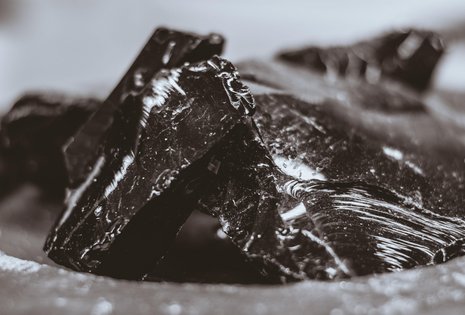TU/e student team unveils smelter to tackle e-waste
Team CORE of Eindhoven University of Technology will present its R&D smelter for recycling e-waste, i.e. electronic waste, in a livestream on November 20th. The goal is to tackle the most complex electronic waste, such as old batteries and cell phones. The students want to convert this ever-growing waste stream into raw materials, among other things by extracting the rare metals from it. This means less waste, and less dependence on faraway countries and unsafe mines.
The global production of electronic waste is about 50 million tons per year, of which only twenty percent is recycled. Most of the rest ends up in landfills in Third World countries, where it causes environmental pollution and danger to the population. Or it is dismantled by hand, exposing workers to hazardous substances. At the same time, the rare metals needed in batteries, for example, will run out within a few decades and the extraction of such metals, moreover, is usually highly polluting. So, there is a very urgent need to recycle e-waste.
SOPHISTICATED MIX
Student team CORE is therefore working on a technology to separate the materials in e-waste so that they can be reused. This mainly focuses on the search for a sophisticated mix of waste streams that can be brought to a high temperature in a smelter. The idea is that part of that mix consists of energy-rich waste, such as the last remnants of car recycling, printed circuit boards and sludge. This waste ensures the high temperature that is needed. The metals from the electronic waste in the mix sink to the bottom of the smelter and form a layer of metal. On top of that a layer of slag (obsidian and basalt) is formed. Together with ProRail, the student team is investigating the possibility of reusing the obsidian and basalt as ballast. The metal can be sent to the metal industry as a recycled raw material.
Getting a constant good quality of reusable metals from the smelter is not easy. The art lies in continuously adjusting the mix, because in practice the incoming waste will always vary in composition. And it is precisely this aspect that is a specialism of the team, modelling the waste mix so that it is optimal. That is a puzzle of some complexity. Not only must there be just enough energy-rich waste in the smelter, for example, but the metals must also be prevented from oxidizing (‘rusting’) and the viscosity of the slag layer must be such that the process can run well.
CRUCIBLE
The team is now presenting a smelter installation, specially built for practical research. This was made possible partly thanks to financial support from, among others, the Eindhoven Metropolitan Area. The core of the smelter is a crucible, filled with a waste mix and heated to a maximum of 1600 degrees. After the process has run its course, the students allow the crucible to cool down before analyzing the layers that have been created to arrive at the best waste mixes and processes. Apart from the smelter, the installation consists of a system to cool and purify the gases created in the process. The team is also working on a special shredder for batteries because batteries are not allowed to enter the smelter intact.

To translate this into practice, Team CORE works together with the Institute for Elementary Retraction (IVER), which has an industrial smelter installation in Delfzijl. This plant, with a processing capacity of 30,000 tons per year, should be operational in 2022. For this plant, the team is designing a new feed system, which will ensure optimal ‘feeding’ of the smelter with the right mix.
ZERO AGE
And Team CORE’s ambition does not stop there. There are already ideas for some other plants in the Netherlands that should run on the team’s technology, says the team’s founder and student of Chemical Engineering, Dirk van Meer. “We want to make a maximum contribution to the achievement of the zero age. That is the age in which mankind converts all the waste it generates back into raw materials. In other words, 100 percent recycling.”
In order to be environmentally friendly in every respect, the student team will also sign a contract with Trees4All for the planting of trees and plants at the presentation. In this way, the team and its subsequent startups want to compensate all CO2 released during the process. They will do this in regions where there is still a lot of mining going on.
“It’s wonderful to see the enthusiasm the students of this team create; how they have brought together a network of industrial partners to bring a solution to the market,” says TU/e President Robert-Jan Smits. “Electronic waste is a huge social problem. Team CORE tackles this by turning e-waste into a commodity, which is extremely innovative. I am proud of this team.”

